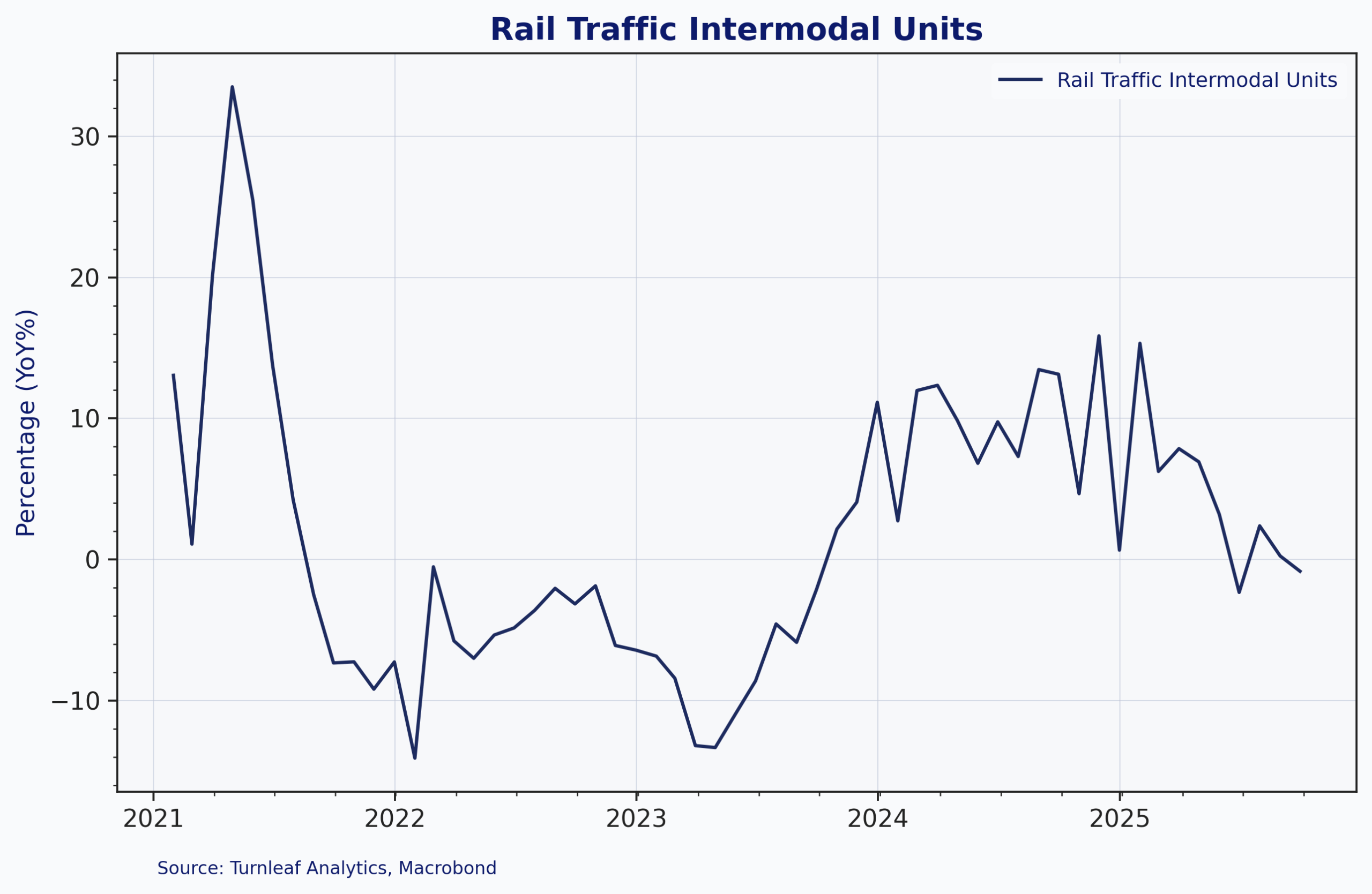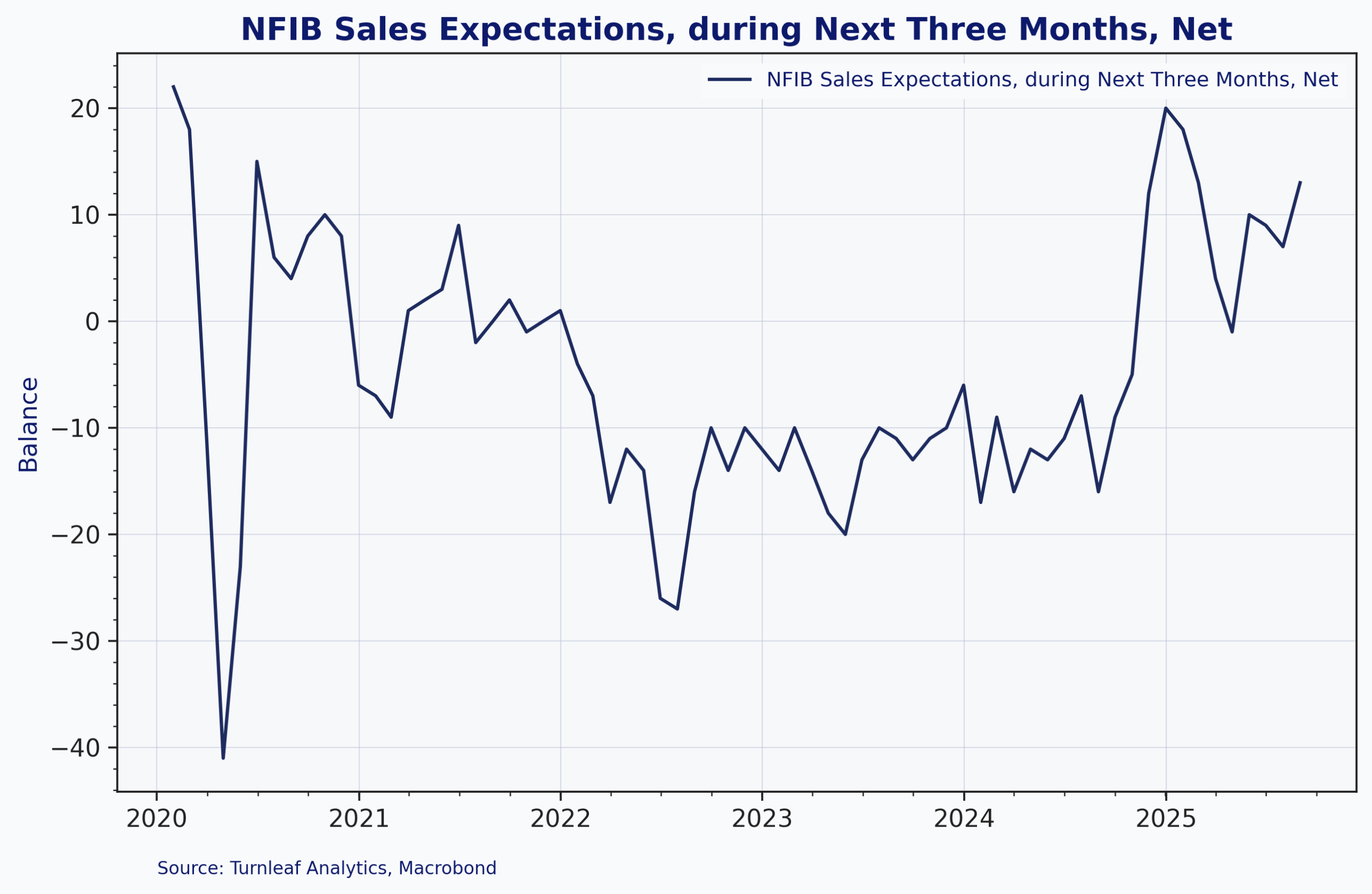Core Goods and Core Services are steering U.S. inflation in the second half of 2025. According to Turnleaf’s U.S. inflation models, Core Goods will be driven by short-lived tariff effects and softer goods flow over the next three months, while Core Services dominates medium- to long-term inflation trends. Core Services will remain elevated insofar as money continues to reach big buyers of services. When banks have room on their balance sheets, large firms can keep funding projects and renewing service contracts. That supports demand for scarce skills in tech, information, and finance, which keeps pay high. Since services are labor-heavy, those higher wages flow into prices and make them slow to fall even as goods cool.
Core Goods
Near term, Core Goods inflation is nudged by tariffs and softer flows, but the impulse is likely to fade into year-end.
Rail intermodal volumes are slowing down and according to Turnleaf’s model, putting slight upward pressure on inflation. The downturn suggests that products are being replaced on shelves at a lower rate compared to last year (Figure 2). Even so, small-business net sales expectations for the next three months have improved after the first tariff headlines. The rebound is likely driven by better clarity on tariff pass-through, rather than stronger underlying consumer demand (Figure 3).
Figure 2

Figure 3
 Turnleaf’s model points to Core Goods SA CPI converging toward 0.1%MoM, with tariff base effects easing by year end (Figure 4). Core Goods makes up about 20% of the basket yet has added roughly 0.23% to headline. Sales expectations have steadied even as volumes slow, which suggests firms are protecting margins with targeted markups without an immediate hit to demand. Businesses and consumers appear to be adjusting to a tariff “new normal” as long as demand holds. We expect tariffs to show up in prices for a few months, then fade, leaving Core Goods a limited contributor rather than the driver of the inflation trend.
Turnleaf’s model points to Core Goods SA CPI converging toward 0.1%MoM, with tariff base effects easing by year end (Figure 4). Core Goods makes up about 20% of the basket yet has added roughly 0.23% to headline. Sales expectations have steadied even as volumes slow, which suggests firms are protecting margins with targeted markups without an immediate hit to demand. Businesses and consumers appear to be adjusting to a tariff “new normal” as long as demand holds. We expect tariffs to show up in prices for a few months, then fade, leaving Core Goods a limited contributor rather than the driver of the inflation trend.
However, if an additional 100% tariff on China goes ahead and Beijing retaliates, inflation could tilt modestly higher. Given the uncertainty, Turnleaf will track high-frequency signals like freight and port volumes and business sentiment indicators to gauge how this news flows through to U.S. inflation.
To continue reading, visit Turnleaf’s Substack page.